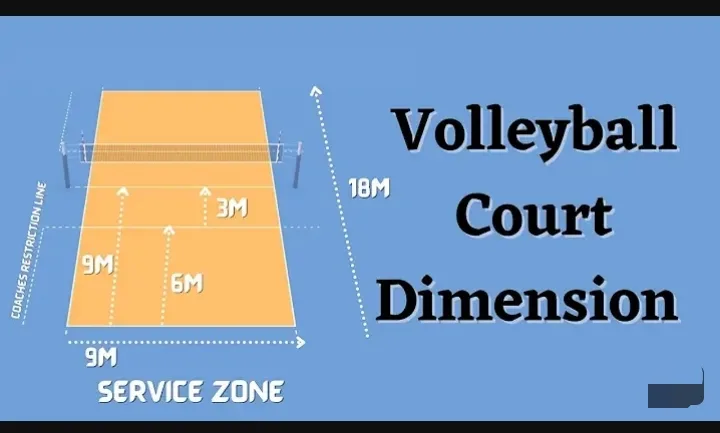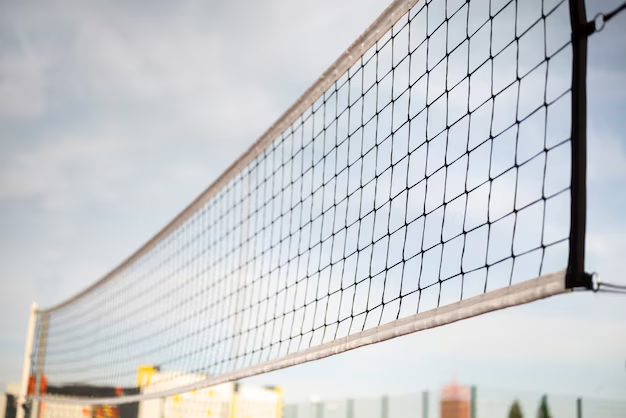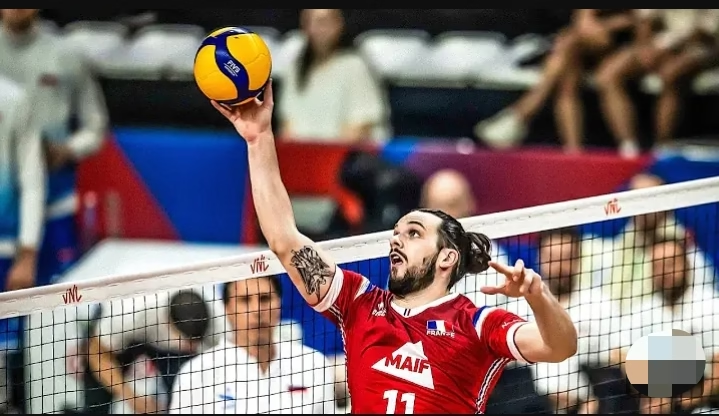Here we want to look at volleyball court dimensions. One important aspect of volleyball that sometimes tends to be ignored is the court. It is significant and quite necessary that players study the dimensions of the court, as this could help them with positioning, serving the ball, and other important steps that could be helpful during a game.
Volleyball is a very interesting and high-tasking sport that is enjoyed by people of all ages globally. It is a game that requires teamwork, skills, and expertise, especially for athletes with the goal of winning.
It is therefore crucial that you learn the various skills needed to succeed in the game. Excluding the skills, one important aspect of volleyball that you should learn and know is volleyball court dimensions.
It is significant and quite necessary that players study the dimensions of the court, as this could help them with positioning, serving the ball, and other important steps that could be helpful during a game.
This article contains detailed information on the dimensions of the court and their essential components. Hence, while learning to serve a ball, ensure to get to know what the dimensions of the courts are. Let’s take a look:
Volleyball is a task game played by a team of two players or a team of six players, depending on the location of the game. Although the main goal of every game is to win, the players of volleyball struggle to make sure that they hit the ball over the net and get a floor touchdown on the opponent’s side.
It is also important that the players ensure that their bodies do not come into contact with the net while carrying out their aim, hence the importance of studying the volleyball court right before the game.
What is Volleyball Court
Volleyball courts are playing surfaces that are flat rectangles in shape that come with a net, which helps to demarcate the two teams. However, there are different types of volleyball courts used in the game of volleyball.
See Also:
- Official Volleyball Net Heights for All Levels of Play
- Discover Home Volleyball Training Equipment
- Discover Best Volleyball Nets in 2024 – Best Choices
TYPES OF VOLLEYBALL COURT
- Hardwood Volleyball Court: A hardwood volleyball court is mostly used in indoor volleyball games and is made of very hard wood, usually maple or oakwood. It provides a durable and elegant surface that enables the ball to bounce sweetly, making them the most preferable courts to use during a professional or competitive volleyball game.
- Synthetic Volleyball Court: synthetic volleyball court, on the other hand, is made of synthetic materials. Although it looks much like the hardwood, it is nothing like it. They are made from materials such as vinyl or PVC and are designed for outdoor volleyball games such as beach volleyball. It might not be as durable as the hardwood volleyball court, but it offers easy installation and maintenance, so it can be used for both indoor and outdoor games. They are very suitable for indoor games in the gym and recreational centers where hardwood may not be feasible.
- Court Tile Surface: Court tiles are modular interlocking tiles made of materials like plastic, rubber, or PVC and are used to create volleyball courts indoors and outdoors. The fact that they are court tiles makes them easy to install, maintain, and replace, hence making them a good choice for both indoor and outdoor games. The most beautiful part of a court tile surface is that it comes in various colors and designs and can be customized based on an individual’s choice.
These are the various types of volleyball courts; however, it is also important to know the dimensions of the court, as this can have a huge impact on your performance.
Measurement of a Standard Volleyball Court
Regulation indoor volleyball court dimensions are consistent across international, collegiate, and club volleyball. However, high school volleyball courts have slightly different measurements.
Net heights vary for men’s, women’s, sitting, junior’s, and recreational volleyball. Volleyball.com.ng provides guidance on the required court dimensions and net heights set by the FIVB, NCAA, NFHS, and USA Volleyball.
If you are wondering what the measurement of a volleyball court is, then you should pay attention to this part of the article:
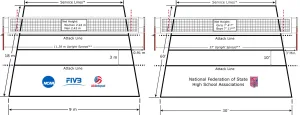
Resources:
- Fivb volleyball rules
- Ncca volleyball rules
Indoor Volleyball Court dimensions
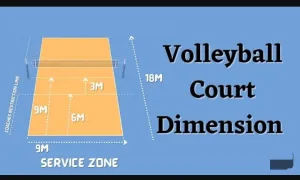
Length and Width of the court: A volleyball court is 18 meters long, which is about 59 feet, and stretches between opposing end lines. It is also about 9 meters wide (29.5 feet), hence extending from one side line to the next.
The net height is about 2.43 meters (77 feet 11 5/8 inches) for men and 2.24 meters (7 feet 4 1/8 inches) for women.
The antenna height of an indoor volleyball court is about 2.55 meters (8 feet 4 inches), while the attack line is about 3 meters from the center line, which helps to divide the court into two parts.
Court Layout:
- Boundary Lines: Define the perimeter of the court.
- End Lines: Mark the length of the court.
- Sidelines: Mark the width of the court.
- Attack Line: Separates the front court (near the net) from the back court (between the attack line and end line).
- Service Area: The area beyond the service line where players serve the ball.
Beach Volleyball Court dimensions
The length of a beach volleyball court is about 16 meters long (52.5 feet) and 8 meters wide (26.25 feet). For USA Volleyball and the NCAA, a free space of 6 m (20’) is recommended, with adjacent courts sharing free space if needed. If courts are positioned end line to end line, a 9-meter (29-foot) free space is advised.
FIVB World and Official Competitions:
- Free Zone: Minimum of 5 m (16’) and a maximum of 6 m (20’) from end lines and side lines.
- Free Playing Space: Minimum height of 12.5 m (41’) from the playing surface.
Court Layout:
- Boundary Lines: Define the perimeter of the court.
- End Lines: Mark the length of the court.
- Sidelines: Mark the width of the court.
- Service Area: The area beyond the service line where players serve the ball.
The height of a beach volleyball court also differs when a male or a female is playing. The height of the net is about 2.43 meters (8 feet) high for men and 2.24 meters (77 feet 4 inches) for women. The antenna height is about 2.43 meters (8 feet), and the attack line is about 3 meters away from the centerline.
Summary
Types of volleyball courts:
- Hardwood Volleyball Court: Primarily used indoors, made of durable maple or oak wood.
- Synthetic volleyball court: made from materials like vinyl or PVC, suitable for outdoor and indoor use.
- Court Tile Surface: modular interlocking tiles, easy to install and maintain, used both indoors and outdoors.
Regulation Indoor Volleyball Court Dimensions:
- Length and Width: 18m (59 feet) long and 9m (29.5 feet) wide.
- Net Height: 2.43 meters (8 feet) for men and 2.24 meters (7 feet 4 1/8 inches) for women.
- Antenna Height: 2.55 meters (8 feet, 4 inches).
- Attack Line: 3 meters from the center line.
- Court Layout: Includes boundary lines, end lines, sidelines, attack line, and service area.
High School Variations:
Measurements slightly differ from international, collegiate, and club standards.
Beach Volleyball Court Dimensions:
- Length and Width: 16m (52.5 feet) long and 8m (26.25 feet) wide.
- Free Space: USA Volleyball and the NCAA recommend 6 meters (20 feet), with 9 meters (29 feet) advised for adjacent courts.
- Free Zone and Playing Space: Minimum of 5 meters (16 feet) to 6 meters (20 feet) from end lines and side lines; minimum height of 12.5 meters (41 feet) from the playing surface.
- Net Height: 2.43 meters (8 feet) for men and 2.24 meters (7 feet 4 inches) for women.
These measurements are standardized by the Federation Internationale de Volleyball (FIVB) for international competitions and, hence, are very accurate measurements. So don’t just practice a serve; study your court.

